I have a large number of csv data files that are located in many different subdirectories. The files all have the same name and are differentiated by the subdirectory name.
I'm trying to find a way to import them all into r in such a way that the subdirectory name for each file populates a column in the datafile.
I have generated a list of the files using list.files(), which I've called tto_refs.
head(tto_refs) 1 "210119/210115 2021-01-19 16-28-14/REF TTO-210119.D/REPORT01.CSV" "210122/210115 2021-01-22 14-49-41/REF TTO-210122.D/REPORT01.CSV"
[3] "210127/210127 2021-01-27 09-39-15/REF TTO-210127_1.D/REPORT01.CSV" "210127/210127 2021-01-27 09-39-15/REF TTO-210127_2.D/REPORT01.CSV"
[5] "210127A/210127 2021-01-28 15-57-40/REF TTO-210127A_1.D/REPORT01.CSV" "210127A/210127 2021-01-28 15-57-40/REF TTO-210127A_2.D/REPORT01.CSV"
I tried a few different methods to import the data into r, but they all had errors related to 'embedded nul(s)'.
For example, tbl <- tto_refs %>% map_df(~read.csv(.))
There were 50 or more warnings (use warnings() to see the first 50)
warnings() Warning messages: 1: In read.table(file = file, header = header, sep = sep, ... : line 1 appears to contain embedded nulls 2: In read.table(file = file, header = header, sep = sep, ... : line 2 appears to contain embedded nulls
etc.
How can I get this data into R?
Edit: the .csv files are generated from Agilent Chemstation analytical software.
